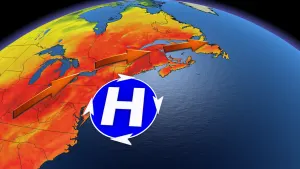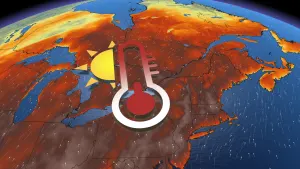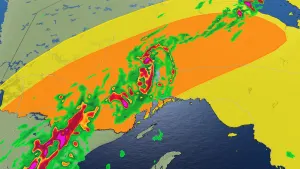
New EarthCARE mission to reveal how clouds, aerosols impact climate
Canada plays an important role in this new European-Japanese climate satellite mission.
A new satellite has launched into orbit with the mission to clear up our understanding of how clouds and aerosols influence Earth's changing climate.
Climate models have already done quite well in predicting our planet's response to the more than two trillion metric tons of excess carbon dioxide human activities have dumped into the atmosphere over the past 150 years. However, one aspect of the modelling that still needs improvement is how clouds and aerosols (dust, pollen, ash, etc.) affect the climate.
EarthCARE (the Earth Cloud, Aerosol and Radiation Explorer) is a joint European-Japanese satellite mission that, after years of delays, has finally launched to bring us a step closer to that goal.

This artist's rendition shows the EarthCARE satellite flying over a hurricane, with the mission data reconstructing the vertical cloud profile of the storm, with the densest parts of the cloud bands shown in darker colours. (ESA/ATG medialab)
"EarthCARE is a rather ambitious mission that puts 4 different instruments onto one satellite, to remotely measure the properties of clouds and aerosols in the atmosphere," says Howard Barker, a research scientist in the Improving Climate and Weather Prediction Models section at Environment and Climate Change Canada.
Canada has its own, aptly named, Canadian Space Agency. However, we are also a contributing member of the European Space Agency, which gives Canadian scientists access to a wide range of missions to participate in. This involves projects alongside NASA, like the James Webb Space Telescope. We also take part in several ESA Earth observation satellite missions, including EarthCARE.

This artist's rendition shows the EarthCARE satellite orbiting above the atmosphere. The satellite's monochrome colour and long profile inspired the Japan Aerospace Exploration Agency (JAXA) to nickname the mission "White Dragon". (ESA/ATG medialab)
While others will handle the day-to-day operations of the EarthCARE satellite and the cataloguing of the data gathered by its instruments, Barker and his colleagues have a very important role in the mission.
Before any of EarthCARE's data is made available to researchers and climate modellers, the ECCC team will ensure that it all actually makes sense — essentially that the satellite is properly measuring what's really there.
"We are in charge of developing algorithms for radiative transfer in the atmosphere, for use in the EarthCARE mission," Barker says. For Earth and its atmosphere, 'radiative transfer' refers to how incoming sunlight and outgoing infrared radiation (heat) interact with the planet's surface, its oceans, and all the components of its atmosphere (gases, water vapour, clouds, ash, dust, pollen, etc.).
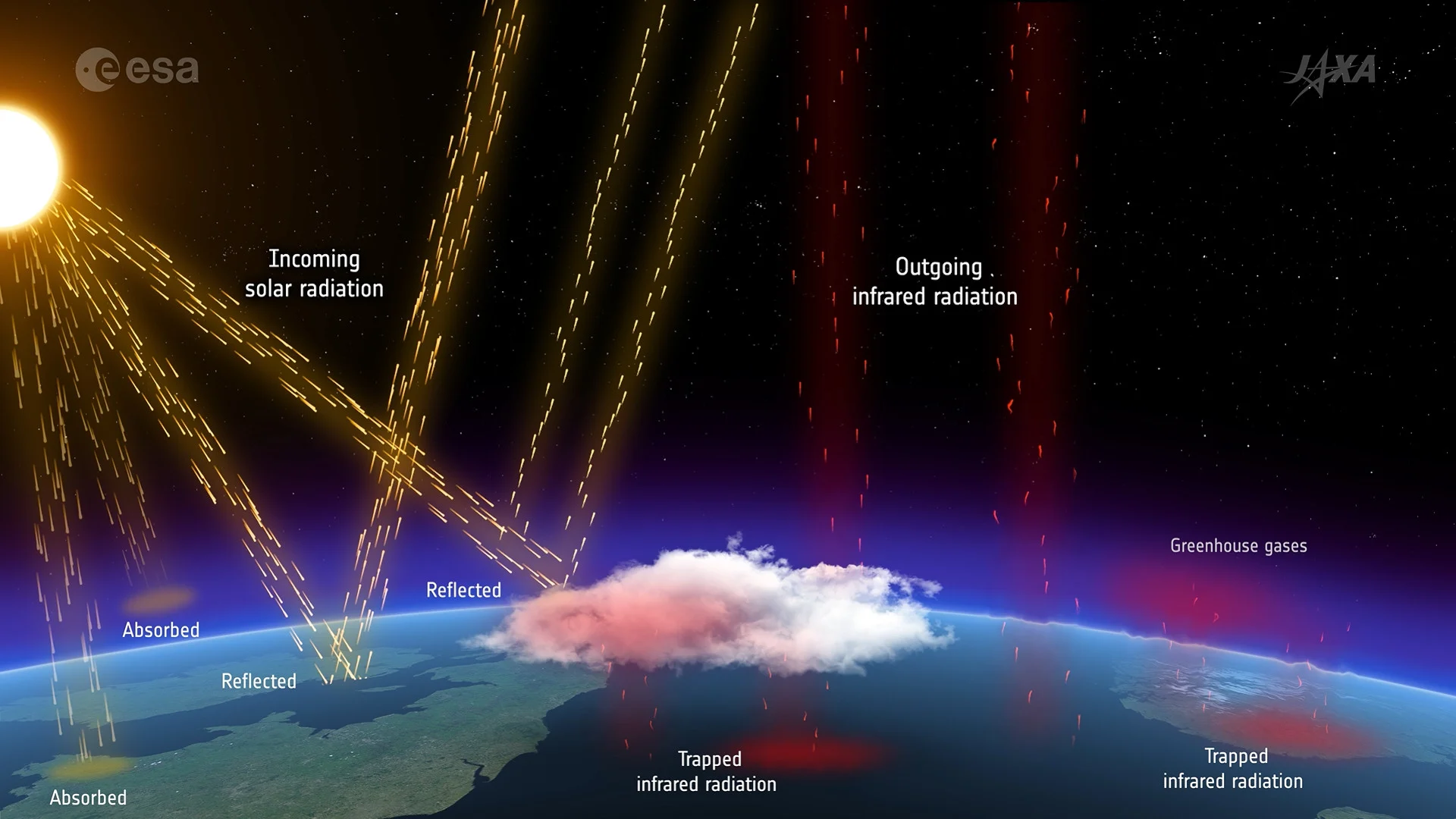
This infographic shows the interactions of radiative transfer involving Earth and its atmosphere — the absorption and reflection of sunlight from the surface and cloud tops, and the emission, absorption and re-radiation of infrared radiation from Earth's surface, clouds, and greenhouse gases. (ESA/ATG medialab)
"The ultimate goal of those radiative transfer calculations is to perform an ongoing, continuous assessment of the quality of the retrievals of cloud and aerosol properties that are done by the four instruments on the satellite," Barker explained.
Essentially, Barker says, they are the end of the pipeline for EarthCARE data, ensuring the quality of the data before it reaches the scientific community.
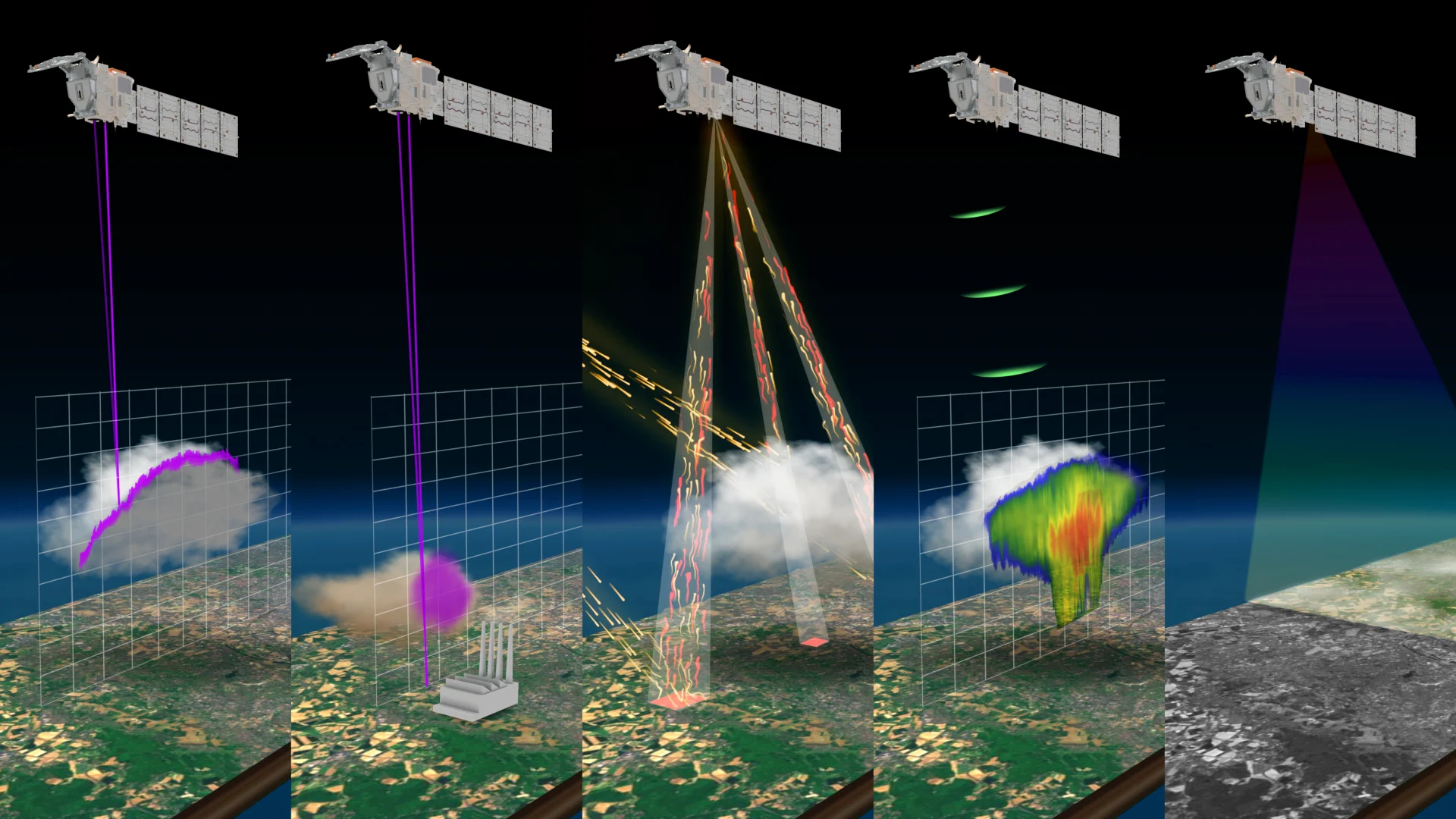
EarthCARE's five instruments are shown in action here — the atmospheric lidar, in the left two panels, reading the altitude and thickness of clouds and aerosols, the broadband radiometer measuring how much reflected sunlight and outgoing heat radiation reaches the satellite, the cloud profiling radar getting a detailed vertical cross section of the clouds, including water content, and the multispectral imager takes a broad image of the cloud conditions for context. (ESA/ATG medialab)
"With global climate change increasingly affecting our planet, EarthCARE's advanced instruments and technology are poised to provide key data to improve the accuracy of climate models and support numerical weather prediction," the ESA says. "The mission comes at a critical time in the development of kilometre-scale resolution global climate models and promises to provide an important contribution to a better understanding of cloud convection and its role in Earth's radiation budget."
Clouds, aerosols, and climate
Clouds and aerosols have a dual impact on Earth's radiative transfer.
They reflect incoming sunlight, thus producing a cooling effect. At the same time, though, they absorb and re-radiate heat escaping from the planet below, which results in warming.
The type of cloud dictates whether the cooling or the warming effect dominates. The amount of heat trapped by high, thin clouds is greater than the amount of sunlight they reflect, so they amplify warming. The reverse is true for low, thick clouds, which enhance cooling.

Different types of clouds have different impacts on the climate system, and while current cloud distributions result in more cooling than warming, that trend is expected to reverse in the future. (ESA)
Currently, low clouds are more common than high clouds. Thus, the overall effect of having more cloud cover is that it cools the climate, offsetting some of the warming from greenhouse gases.
As the climate changes, though, we expect to see more high clouds and fewer low clouds. This will reverse the overall effect. More cloud cover will then enhance the warming we are already experiencing from greenhouse gases.
With aerosols, in general, their direct effect is the same as clouds, both reflecting sunlight and absorbing and re-radiating infrared radiation. The more aerosols there are in the air, the greater these direct effects are.
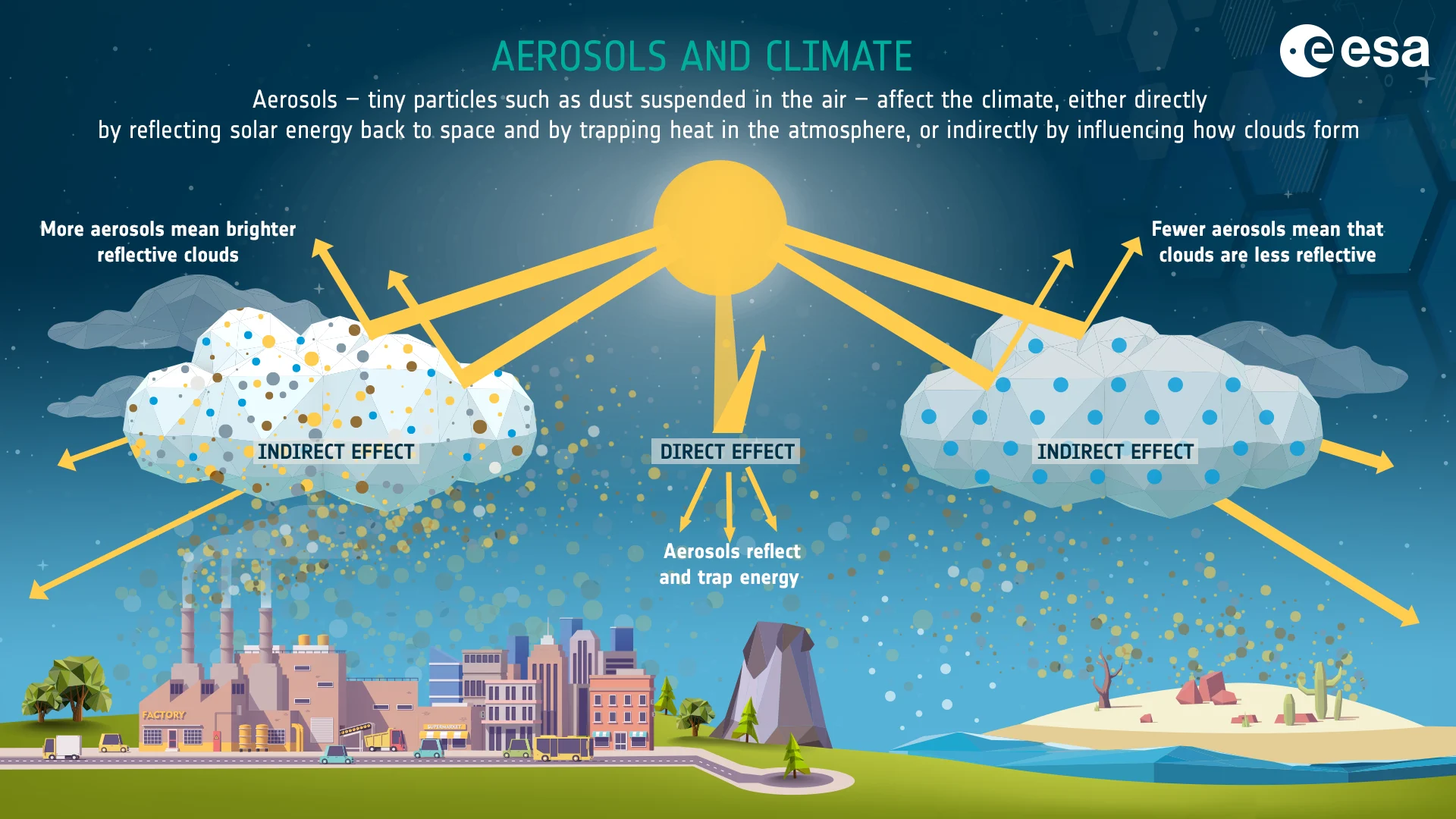
The effects of aerosols on Earth's climate are shown in this infographic, including both their direct and indirect impacts. (ESA)
However, their greatest impact on the climate is through their indirect effects, as they act as cloud condensation nuclei — tiny bits of physical matter for water vapour to condense onto, resulting in cloud droplets. Thus, as long as there is ample water vapour available, having more aerosols in the air tends to result in more clouds developing. Also, the more aerosols there are, the brighter the cloud tops will be, thus allowing them to reflect more sunlight and have a stronger cooling effect.
So, with all of these different ways of influencing the climate, all going on at the same time, it has been challenging to factor in the impacts of clouds and aerosols into climate models.
With the data from EarthCARE, the hope is that some of these challenges can be overcome, allowing climate models to produce better results and give us a clearer look at what the future will bring.








